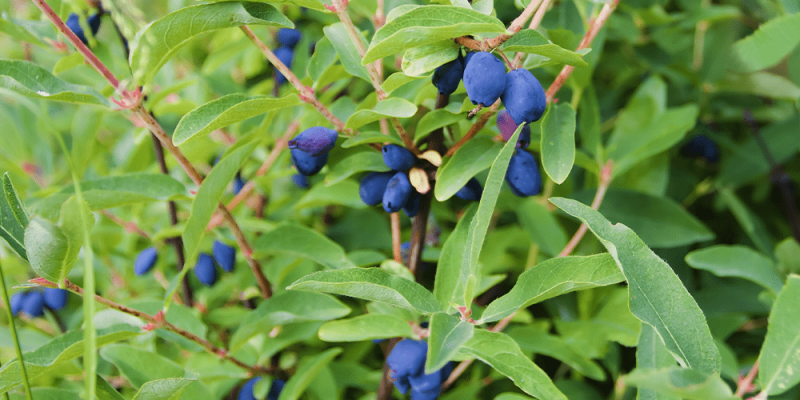Growing Haskap can be a rewarding endeavor for both home gardeners and commercial growers. These berries require specific considerations for successful cultivation, and this blog here highlights the same.
- Climate and Soil Conditions:
Haskap berries thrive in cooler climates and are well-suited for regions with cold winters. They are hardy plants, capable of withstanding temperatures as low as -40°F (-40°C). Well-drained soil is crucial for their growth, and they prefer slightly acidic to neutral soil pH levels.
- Variety Selection:
There are various Haskap varieties available, each with its unique characteristics, including taste, size, and color. It’s essential to choose varieties that are well-suited to your specific climate and soil conditions. Popular cultivars include Tundra, Borealis, and Indigo Gem.
- Planting Location:
Selecting an appropriate planting location is key to the success of Haskap cultivation. Choose a site with full to partial sun exposure. Ensure good air circulation to minimize the risk of diseases. Plant Haskap bushes away from areas prone to late spring frosts, as these can damage the blossoms.
- Pollination Requirements:
Haskap berries require cross-pollination for optimal fruit set. This means you need at least two different compatible varieties for effective pollination. Planting Haskap bushes in groups rather than as isolated specimens enhances the chances of successful cross-pollination.
- Planting and Spacing:
When planting Haskap bushes, it’s crucial to space them adequately to allow for proper growth and airflow. Typically, bushes should be spaced 4 to 6 feet apart within rows and 8 to 10 feet between rows. Proper spacing ensures that each plant receives sufficient sunlight and reduces the risk of diseases.
- Soil Preparation and Amendments:
Haskap berries benefit from well-draining soil rich in organic material so prepare the soil well. Mulching around the plants helps retain soil moisture, suppress weeds, and regulate soil temperature.
- Pruning Practices:
Pruning is an essential aspect as it helps maintain plant health, encourages air circulation, and facilitates easy harvesting.
- Watering Needs:
While Haskap berries are relatively drought-tolerant once established, consistent and adequate watering is crucial during their early growth stages and during dry periods.
- Pest and Disease Management:
Aphids, mites, and birds are common challenges. Employing organic pest control methods and using netting to protect the berries from birds can help manage these issues.
- Harvesting:
Harvesting Haskap berries at the right time is essential. They are ready for picking when they have turned a deep purple or blue color and have a slightly soft texture. Harvesting is typically done by hand to prevent damage to the delicate fruit.
In this way, growing Haskap berries requires careful consideration of so many important factors listed-above. Canada Haskap growers always pay attention to these important details, resulting in a bountiful harvest of these nutri-delicious berries.




